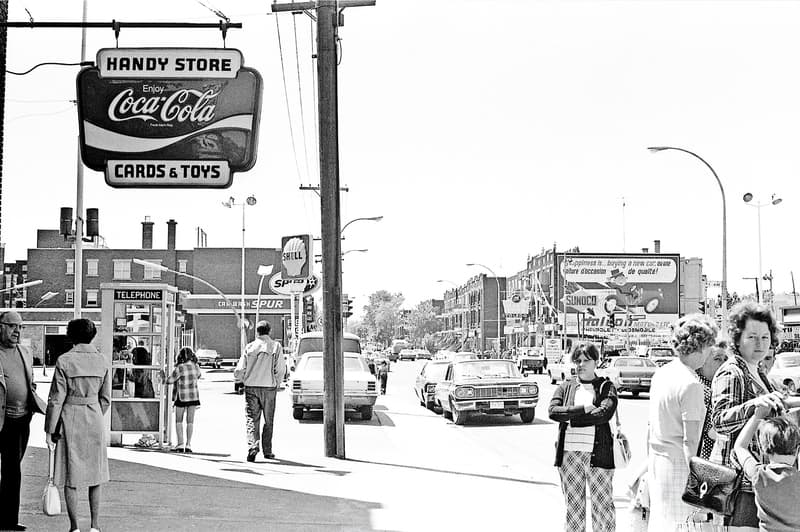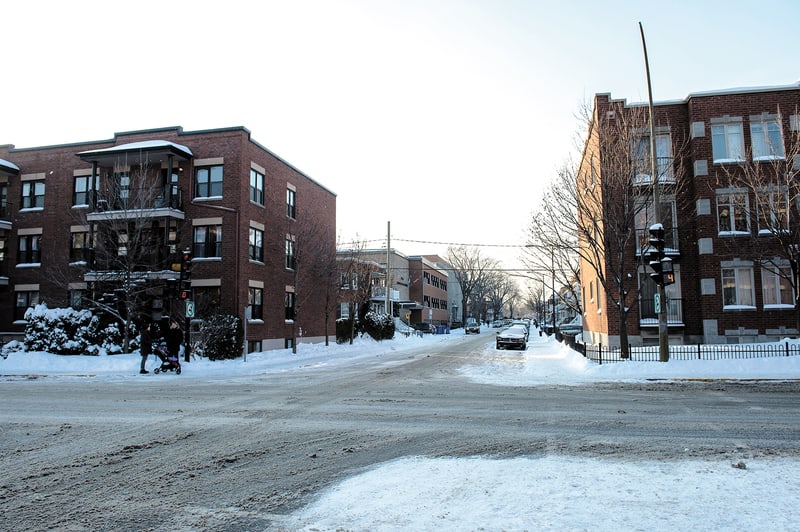The avenue Bannantyne, corner 5th Avenue

 Photo courtesy of the Archives of the City of Montreal, Patricia Ling, Verdun. Ave Bannantyne. 1973. P132-2_071-016. Photo Pierre-Paul Poulin
Photo courtesy of the Archives of the City of Montreal, Patricia Ling, Verdun. Ave Bannantyne. 1973. P132-2_071-016. Photo Pierre-Paul Poulin
Centre d’histoire de Montréal, in collaboration
Saturday, January 20, 2018 17:54
UPDATE
Saturday, January 20, 2018 17:54
Look at this article
On the avenue Bannantyne
At Verdun in 1973, the movie reign on Bannantyne at the height of the 5th Avenue. Drawn in 1890, this street is named in memory of Dugald J. Bannantyne, vice-president of the company St. Stone Land & Mfg. The subdivision of the avenue Bannantyne reflects that of the City of Verdun, which is experiencing a rapid urbanisation, but delayed due to seasonal flooding. It is only with the construction of a dike, from 1896, that people feel safe enough to settle in Verdun. Starting in the east, the development will be done gradually to the west. It was in July 1899 that the tram begins to flow on Wellington street. The first catholic and protestant parishes make their appearance. The creation of the City of Verdun in 1907, the territory between boulevard LaSalle and Champlain as far as rue Willibrord is largely inhabited. With the urbanization of the western sector, Verdun gets the status of a third the most populous city in Quebec in 1931, with its 60,000 residents.
The corner of the car
Right next to the brand of Coca-Cola of Variety in Savoie, in the garage of F. Thériault, Shell service stations and Two Brother PO, without forgetting the dealer of used cars from this corner of the street, a place frequented by motorists in 1973. If, in a first time, the tramway contributes to the establishment of suburbs in montreal, the expansion of the road network in the 20th century is proving to be a powerful stimulant for their growth. Bordered by LaSalle boulevard along the river, Verdun is often visited by vacationers, first by carriage, then by automobile. That can easily be purchased in gasoline service stations more numerous, motorists visiting Verdun, take advantage of the promenade on the edge of the water, swimming to the beach or stay in a cabin for tourists. For the residents of Verdun, including the use of a car is initially more modest than elsewhere, access to these garages and the roads gradually paved and cleared of snow stimulates the interest in this new means of motorised transport.
Hello Verdun
It is at the end of the Second world War in the Bell telephone company installs the first telephone booths in Montreal. At the time, few people had a telephone at home. It is necessary to run at the merchant closest to you, to the hotel, at the station or in the rich neighbor. To better reach its customers, Bell actually install the cabins to the outside. But this new service raises several questions, including the most important : does it heat up the cabins in the winter ? Finally, without heating, the first cabins in 1944 were painted red and provided with doors in the range. The phones are equipped with three slots to slide the coins of five, 10 and 25 cents. At the end of the wire, the operator means the pieces fall, each of them emitting a ringing tone. In this way, she always knows if the customer has deposited enough coins to cover his call. Disappearing gradually from the urban landscape, telephone boxes lose their usefulness in the era of cell phone.



